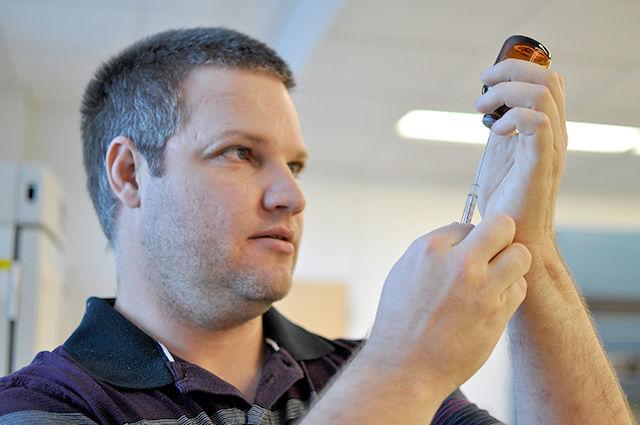John Wilson, who received his Ph.D. from NC State, was among the team of researchers who discovered human activity was the major reason behind the declining cheetah population while at two study sites in South Africa.
In the early 1900s, there were about 100,000 cheetahs in the wild. That number has recently plummeted to only about 10,000.
The common assumption has been that cheetah populations have been declining due to competition from larger predators such as kleptoparasitism, or prey stealing, according to Wilson.
“A cheetah has no chance against a lion,” Wilson said. “A lion will charge the cheetah off its prey, and the cheetah can’t defend itself.”
However, new research shows that other predators aren’t to blame, according to Wilson.
“We’ve now shown that assumption doesn’t necessarily hold,” Wilson said. “It’s more searching for the prey that causes them to suffer, and that’s what humans contribute to.”
Fenced-in conservation areas and industrial development in South Africa have forced cheetahs to cover vast distances to both avoid people and find any quarry.
“If any animal has to work harder to avoid humans, that’s going to affect them,” Wilson said. “Energy that they invest in avoidance of humans, they could have used to feed their babies or to find food.”
Wilson said the research he conducted studied energy expenditure, or how hard the cheetahs had to work to find and kill prey.
After using GPS points to measure how far the cheetahs walked, the team realized walking to find prey caused all cheetahs to spend massive amounts of energy, according to Wilson.
To measure how hard a cheetah works, the team used a doubly-labeled water technique, a direct measure of the energy that a cheetah expends over the course of a day.
“You catch the animal and inject them with this isotope and follow them over time to get body samples to track the isotope,” Wilson said. “From the excretions of the cheetah, we were able to sample the body water and using this body water, look at the isotope to see how hard the cheetahs work,” Wilson said.
Water has a hydrogen and oxygen isotope, and both hydrogen and oxygen by can be lost by breathing or sweating.
“Sweating is generally pretty constant, but the harder you work, the more you breathe,” Wilson said. “You lose more oxygen the harder you work, and by looking at the ratio of losses between oxygen and hydrogen, you can get a really good estimation in kilojoules per day of how hard the cheetahs work.”
This is the first time anyone has followed the energetics of a large mammal at such a fine resolution, according to Wilson.
“You can basically think of it as there is four things that a cheetah does,” Wilson said. “A cheetah can rest, actually chase the prey, they can play, or they can look for prey.”
Even though chasing the prey is energy extensive, it only contributes to a very small part of the day.
Most of the chases are very short, about 32 seconds long on average, according to Wilson.
Such bursts of energy were taxing, but prolonged walking proved to be much more detrimental to the cheetahs’ success. Wilson’s study suggests that cheetahs were designed to rest near their food source rather than trek for miles searching for it.
Even though human impact hurts the cheetahs, Wilson said that is impossible to avoid in today’s world.
“We can’t take ourselves out of the ecosystem,” Wilson said. “We need to find ways of mitigating it.”
Wilson said more thought needs to be put into the placement of human activities to avoid infringing upon the cheetahs activities and making them have to work harder.
In an interview with Voice of America, Wilson said there’s a 10 percent chance cheetahs could become extinct within 100 years.
“If we want our children to see the wildlife that we have the opportunities to see, we should not only consider our direct impacts on nature but also our indirect impacts,” Wilson said.








